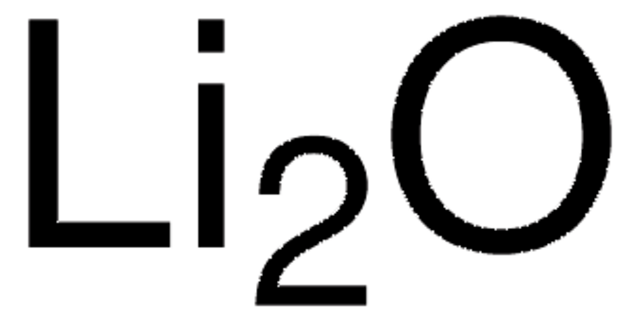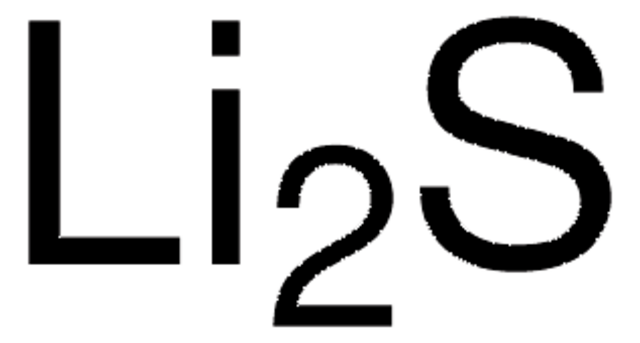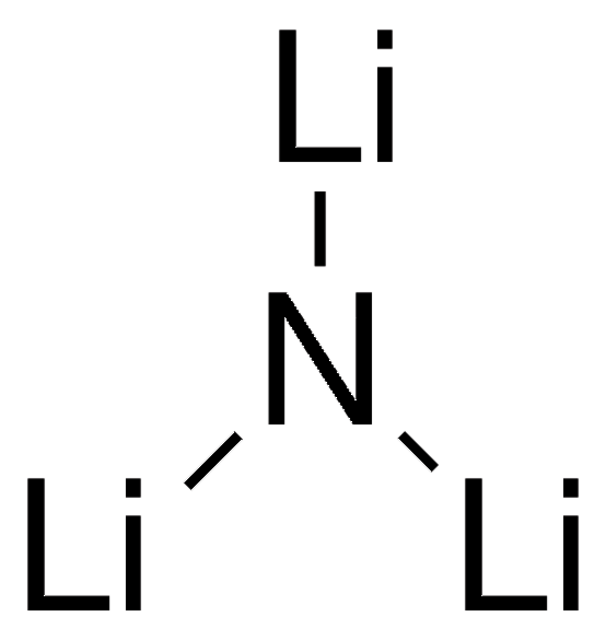203653
Lithium sulfate
≥99.99% trace metals basis
Sinónimos:
Dilithium sulfate, Lithiophor
About This Item
Productos recomendados
grado
for analytical purposes
Ensayo
≥99.99% trace metals basis
Formulario
solid
características de los productos alternativos más sostenibles
Design for Energy Efficiency
Learn more about the Principles of Green Chemistry.
sustainability
Greener Alternative Product
impurezas
≤100.0 ppm Trace Metal Analysis
mp
845 °C (lit.)
densidad
2.22 g/mL at 25 °C (lit.)
aplicaciones
battery manufacturing
categoría alternativa más sostenible
cadena SMILES
[Li+].[Li+].[O-]S([O-])(=O)=O
InChI
1S/2Li.H2O4S/c;;1-5(2,3)4/h;;(H2,1,2,3,4)/q2*+1;/p-2
Clave InChI
INHCSSUBVCNVSK-UHFFFAOYSA-L
¿Está buscando productos similares? Visita Guía de comparación de productos
Descripción general
Aplicación
- In the pretreatment of graphite electrodes of lithium-ion batteries(LIBs). LiSO4-treated electrodes show excellent cycling performance and low interfacial impedance resulting in faster charging of LIBs.
- As a precursor to synthesize sheet-like Li2S@C nanocomposites which are cathode materials for LIBs.
- As an electrolyte for intermediate temperature fuel cells.
- As a processing additive to protect Ni-rich layered oxide cathodes, resulting in improved electrochemical performance.
Palabra de señalización
Warning
Frases de peligro
Consejos de prudencia
Clasificaciones de peligro
Acute Tox. 4 Oral - Eye Irrit. 2
Código de clase de almacenamiento
13 - Non Combustible Solids
Clase de riesgo para el agua (WGK)
WGK 1
Punto de inflamabilidad (°F)
Not applicable
Punto de inflamabilidad (°C)
Not applicable
Equipo de protección personal
dust mask type N95 (US), Eyeshields, Gloves
Elija entre una de las versiones más recientes:
¿Ya tiene este producto?
Encuentre la documentación para los productos que ha comprado recientemente en la Biblioteca de documentos.
Los clientes también vieron
Artículos
Lithium-Ion Battery Performance: Dependence on Material Synthesis and Post‑Treatment Methods
Nuestro equipo de científicos tiene experiencia en todas las áreas de investigación: Ciencias de la vida, Ciencia de los materiales, Síntesis química, Cromatografía, Analítica y muchas otras.
Póngase en contacto con el Servicio técnico












